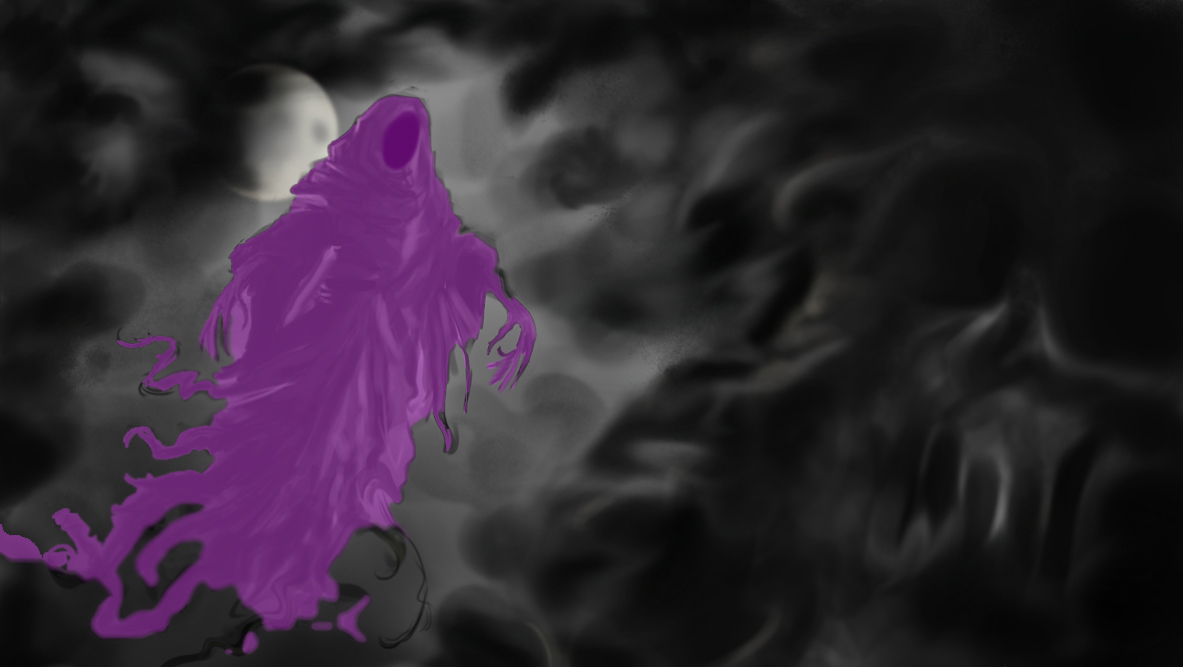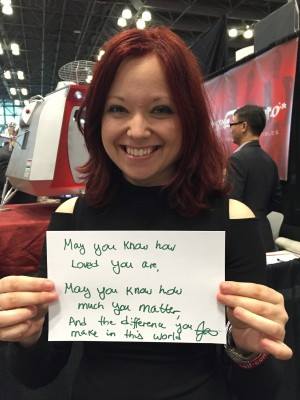It’s that time of the year again – the fall. For many it is the time to celebrate all kinds of pumpkin goodness. However, for the thousands of people with Seasonal Affective Disorder, it is also a very challenging time. I am one of those people.
What is Seasonal Affective Disorder?
Seasonal Affective Disorder (SAD) consists of periods of depression that occur at a specific time of the year. For most people these periods of depression occur in the fall and winter, when the days get shorter. However, for some, they occur in the spring and summer months. Other than feeling down and depressed, some of the symptoms of SAD include:
- Feeling hopeless
- Being fatigued and having little to no energy
- Changes in mood or appetite
- Difficulty concentrating
- Hypersensitivity to rejection or other negative situations
- These changes specifically occur during the given season and never or hardly ever occur during the other seasons
SAD affects more women than it does men, however, men do struggle with it as well. There are many reasons why people might get SAD. For most people it occurs because shorter days lead to changes in our circadian rhythms. This might affect our sleep, energy levels, and even lower the amount of serotonin, a molecule associated with feeling happy (among other functions).
Sometimes SAD can also be further complicated with other physiological or psychological conditions. Some of these may be anxiety, chronic pain, seizures, PTSD symptoms, and others. In fact, more people commit suicide around the holidays, such as Thanksgiving and Christmas. This can in part be due to loneliness around the holidays and can also be due to the complications from Seasonal Affective Disorder.
For me, the SAD is coupled with chronic pain. This kind of depression hits specifically in the fall and winter but more than anything when the weather changes. Before it rains or snows I feel as if I’ve been hit by a truck. It’s kind of hard to explain it fully. My insides churn as if they’re being twisted from the worst kind of food poisoning. A similar feeling as that which brings many of us to our knees when we learn of a loved one’s death. Only no one died.
There are so many times that I feel ashamed for how deeply depressed I feel when the weather changes. Asking myself, “Why would you feel this way? Everything is fine. Snap out of it.” A familiar voice. A parental voice in my head.
And then the migraine hits. Like a sharp ice pick directly into my brain, it makes every sensory experience excruciating. Every light flicker, every sound, every smell. Somehow for me the physical pain symptoms are easier to tolerate than the emotional ones. This seems to be the case for most people.
At times like these I feel as if I’ve been attacked by a Dementor. For those of you unfamiliar with this Harry Potter reference, a Dementor is a fictional monster that feeds on people’s emotions. When it attacks, it sucks the happiness out of people and makes them feel as if things will never be ok again.

For the longest time this is what my depression looked and felt like. In the past 5 years, both in my personal and professional life I’ve been learning about acceptance and commitment therapy. This therapy focuses on teaching us how to accept the things we cannot change, focus on present moment experiences, and live our lives according to our core values.
When I first heard the term “acceptance,” my shoulders tensed up in rebellion. You want me to ACCEPT feeling this way? No way! I don’t want to feel this!
However, I learned that acceptance does not mean that I have to give in to what I am feeling, it does not mean to “suck it up,” it does not mean that I have to want what I’m experiencing. It only means that I am allowing the experience to be there because I cannot change it anyway.
One example I thought of was that of a Pink Dementor. This is probably not something we see everyday.

Take a look at this strange, perhaps grotesque, and perhaps comical picture. See if you can really see it, almost memorize it.
Ok, now close your eyes for exactly 1 minute and try everything you can NOT to think of the Pink Dementor. This includes visualizing it, or thinking of the words “PINK” or “DEMENTOR.”
Ready? GO!
How did that go? If you’re like me and many other people, you probably struggled keeping the strangely bedazzled Dementor out of your mind. This is normal. What this shows is that the more we try to control our emotions or thoughts, the more we are likely to experience them.
Now let’s try the opposite. I want you to close your eyes for 1 minute and do everything you can to think of nothing but the Pink Dementor. Don’t take your mind off of it. Only think of its pink features, keep visualizing it and thinking of it and nothing else. Go!
What did you notice? Chances are that over time your focus probably shifted to other things. In fact, when we allow ourselves to experience painful sensations, physical or emotional, it becomes easier over time. It’s kind of like getting into a hot tub. Initially it might be too hot, but the more we stay in, the more we habituate (get used to it) and the more comfortable we might feel.
Acceptance alone isn’t enough to manage some of the difficulties we might struggle with. Another tool I like to use and also teach my patients is mindfulness. Mindfulness refers to noticing where we are in the present time and to notice if our mind is focused too much on the past or the future. For me, when I get depressed, I tend to blame myself for every past mistake I’ve made or worry about how I’m going to complete all my tasks in the future. Noticing where we are, how we feel, and what we need at the present moment, might help us better cope with the difficult experience. This is because we can focus on that moment while it’s happening and reduce the debilitating impact of past regrets and future worries.
Perhaps one of the most important and often the most overlooked skills is social connection. When we are in pain our bodies need to heal. Sometimes socializing might seem too daunting, especially when we are already depressed or struggling with physical pain. Most of the time when I’m struggling, I just want to hide out from the world. However, when we are able to get social support, our bodies release a special “magical” hormone, oxytocin. Oxytocin is a bonding hormone. It’s released when we are socializing, hugging, snuggling, or otherwise connecting with others. It is especially likely to be released when we are struggling and get the support we need or when we provide that kind of support for others that we care about. I noticed that for me, when I am able to connect with my wonderful partner, my friends, or family, I start to feel better. I might still struggle, but most of the time the pain becomes more tolerable.
At times when we are overwhelmed by physical or emotional pain, we might shut ourselves off from our core values. Our core values are the life directions that give us meaning. Examples of core values include: compassion, creativity, friends/family, career, health, hobbies, etc. It’s all the things we wish we had more time to engage in and all the things we might regret not having had enough time for when it is too late. The more we are able to take at least teeny tiny steps in our valued directions (for example, by texting our friends), the more connected we might feel. When we are down and depressed, this might seem like an impossible task. Sometimes we might even need the help of our loved ones or a mental health professional to help us better connect with our core values to reestablish meaning in our lives. However, for most people, with time, they tend to feel better when connecting with their core values.
Other tools for coping with SAD may include:
- Light Therapy Box
- Psychotherapy, such as Acceptance and Commitment Therapy or Cognitive Behavioral Therapy, for example
- Some people may require medications, such as Serotonin-increasing drugs/supplements. Your doctor should be able to help you decide whether you need it and what option is best for you
Lastly, I want to remind you that you are not alone. We are all in this together. We all struggle, whether it’s with SAD or something else. Everyone does. Every hero. Every Superhero. Just like you.
Keep connecting with your loved ones and your core values, keep superheroing.
Leaving you with the wishes that you may know just how wonderful and amazing you are and know the difference you make in this world.

Janina Scarlet, PhD, is a Licensed Clinical Psychologist, a scientist, and a full time geek. She uses Superhero Therapy to help patients with anxiety, depression, chronic pain, and PTSD at the Center for Stress and Anxiety Management and Sharp Memorial Hospital and is also a professor at Alliant International University, San Diego. Dr. Scarlet is the author of “Superhero Therapy” and has authored chapters in the Sterling Publishing works “The Walking Dead Psychology,” “Star Wars Psychology,” “Star Trek Psychology,” and “Game of Thrones Psychology.” She can be reached via her website at www.superhero-therapy.com or on Twitter: @shadowquill.
